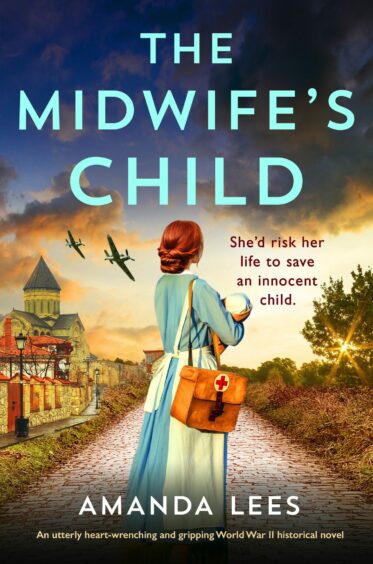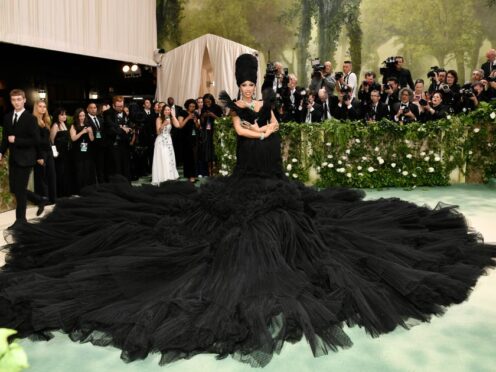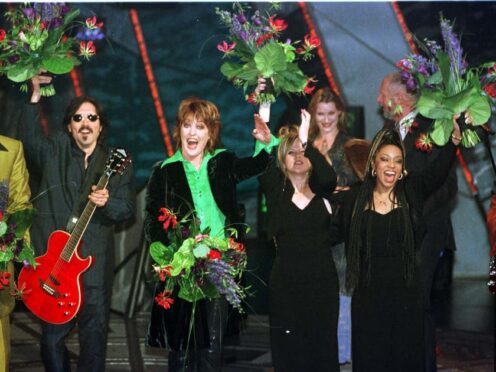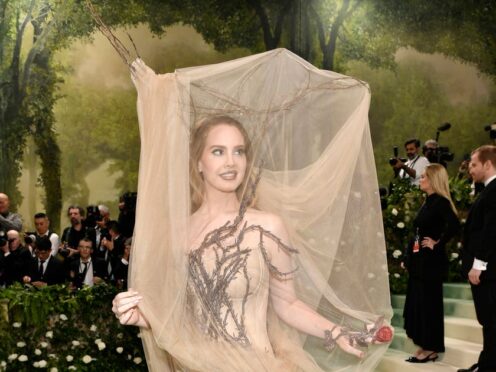Amanda Lees came across the incredible tale of how John Mackay and his wife Edith met when she stumbled upon his obituary. Now she has taken their enduring love story and woven it into her latest novel, The Midwife’s Child.
With a focus on writing stories based around the Second World War, Hong Kong-based author Amanda knew that the story of how Edith (known as Eci) was rescued from an Auschwitz death march by commando John Mackay was too precious to ignore.
“I read an obituary for John and it sparked my interest so I then read as much about them as I could,” she explains. “I was deeply touched by their story and their enduring love for one another and wish I could have met them in person. Although I already had the plot for The Midwife’s Child, their love story inspired that of Maggie and Jamie, the main characters in the book.”
Finding solace in stories
Amanda, who has Scottish roots through her Glasgow-born mum, is a born storyteller. “We always had lots of books at home and I have had my nose in one as long as I can remember,” recalls the author. “I went to a convent boarding school in England from the age of ten, which I hated, and books saved me.
“I would read them under the bedclothes at night with a torch after lights out and under my desk when I was supposed to be doing my prep. I got top grades in my exams so it didn’t affect my schoolwork at all – although don’t tell your children that!” she laughs.
“In fact, I’ve learned more from books than from anything else.”
Writing wasn’t her first career choice, though. She became an actor before realising that: “writing was a far more creative way to earn a living.” More creative, perhaps, but not usually the easy option.
“All writing careers are a rollercoaster unless you’re extraordinarily lucky,” agrees Amanda. “I got one of those fabled huge advances for my first novels but then had to take ten years out to look after my daughter who was seriously ill. As a suddenly single mum, there wasn’t much time to do anything else but care for her. Now she’s thriving and so I went back to writing which, apart from her, is my biggest love.”
The Midwife’s Child is the third in a series of novels that Amanda has set during the Second World War. Each story is meticulously researched, with the plots based on actual events.
“The main character of Maggie and some of the others had already appeared in the first two books although you don’t need to have read them to enjoy this one.
“When it comes to the characters, of course I have to imagine how they felt and what they said and did within their factual circumstances because I wasn’t there. That’s where my acting background really helps as I learned to build and create in-depth, realistic characters with detailed backstories.
“I also spend a huge amount of time observing people and always have done. You’ll find me in the kitchen at parties and people-watching in all kinds of situations.”
Searching for inspiration and characters in real life events doesn’t stretch to simply dropping someone into her books. She prefers to: “create composite characters out of several people…although I did once get an email from an ex-boyfriend who was convinced he was the hero in one of my early novels. He wasn’t.”
I did once get an email from an ex-boyfriend who was convinced he was the hero in one of my early novels. He wasn’t.
For The Midwife’s Child, as for all her novels, Amanda was determined to use primary source material in her research. “I read the original testimonies of people who had survived the death marches along with accounts from survivors of Auschwitz,” she explains. “I was privileged to meet several Hungarian-Jewish survivors both in the UK and Hungary who told me first-hand of their experiences and showed me their tattoos.
“I have never forgotten what they said and I hope I have done them justice in the book.”
Amanda was so entranced by hearing about John and Eci Mackay that she was determined to immortalise them in one of her books. “John and Edith’s story struck me as so redolent of the time,” she enthuses.
True love
“It was a story of honour, determination, resilience and, above all, true love. They were together for 71 Valentine’s Days and that says a lot. Very few couples stay together for that long these days and I loved how they met and how John fought to get Edith and her mother to safety in Scotland. They were obviously both strong, special people who deserve to be remembered.”
With the fourth story in the Resistance Stories currently being written and plans for book number five underway, Amanda has no plans to leave the Second World War era behind just yet. “The joy of writing about this era is that the people I write about, who are based on the real-life members of SOE, the Resistance, and the OSS, were so extraordinary.
“They were forever forced into situations where they had to improvise and often did so brilliantly. That these people were also women who were allowed on what was essentially the front line against such a vicious and powerful enemy only adds to the allure of this period for me.”
The Midwife’s Child by Amanda Lees is available now, £7.99, Bookouture.












Conversation